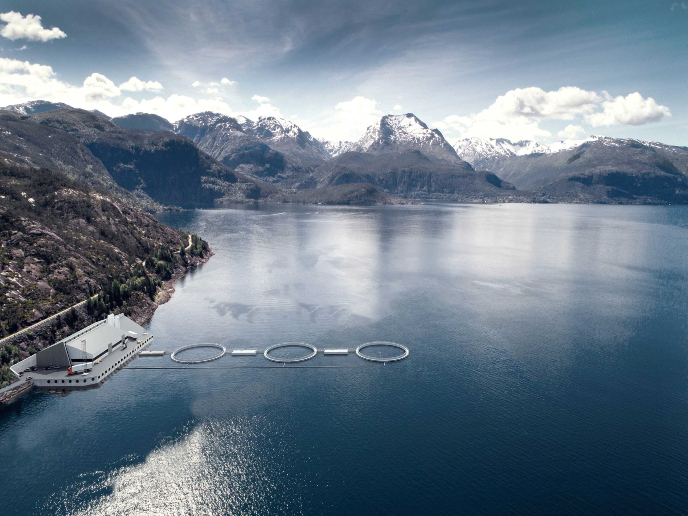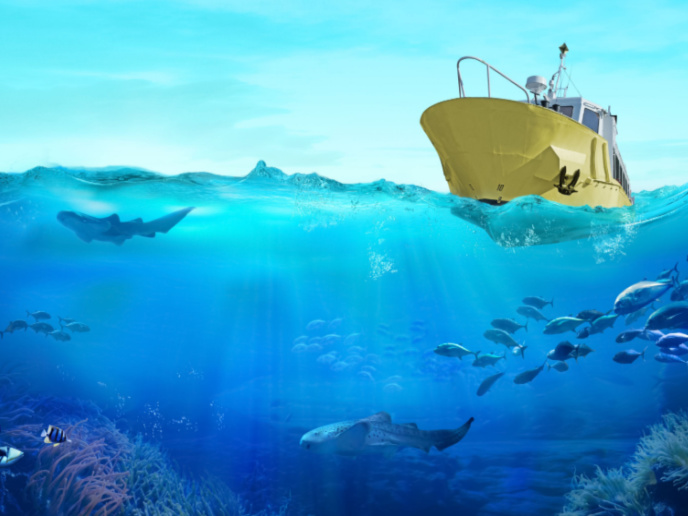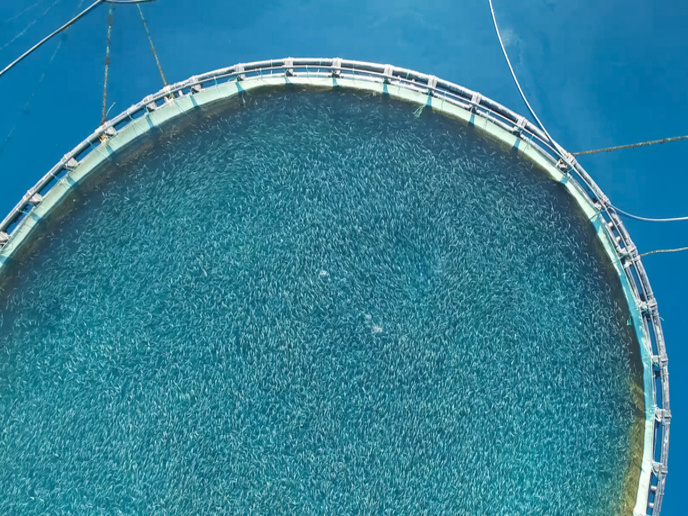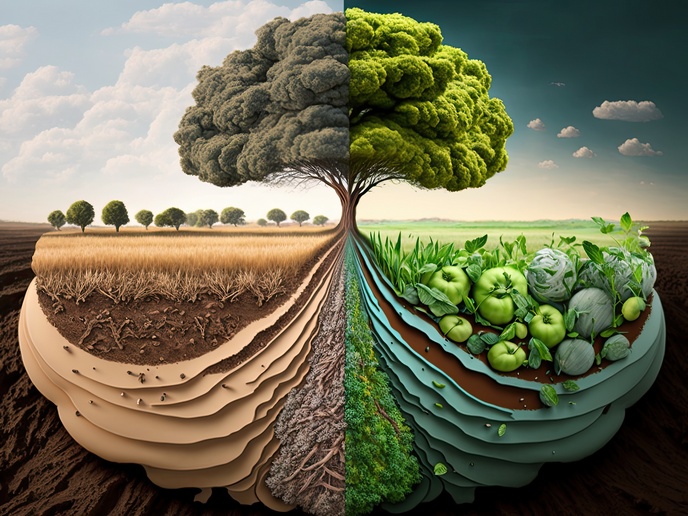New containment system for open water fish farming
Production of Atlantic salmon in Norway has plateaued in recent years due to the temporary restrictions placed by the authorities to combat the spread of diseases, sea lice and fish escapes. These challenges, which affect the marine environment and ecological biodiversity, can be resolved by rearing Atlantic salmon in closed-cage aquaculture systems (CCASs). The EU-funded NEPTUN project developed and piloted the next generation of floating inshore CCASs, offering the full range of necessary features for a stand-alone aquaculture system to produce salmon. “NEPTUN technology addresses major issues in aquaculture to intensify fish growth and create a basis for knowledge based decisions in fish production,” says project coordinator Håkon Lund Bondevik from Norwegian SME Aquafarm Equipment.
A novel design
The NEPTUN CCAS combines an impermeable and durable fibreglass enclosure with an innovative hatch technology to eliminate fish escapes and the need for chemical treatment to prevent sea lice infestation and algae growth. It is equipped with eight separate, adjustable water intakes located at 25-35 m below sea level to avoid pumping surface waters, where the parasites live, into the cage. The water is drained through a strainer and transported through eight respective water treatment systems before entering the 21 000 m3 fibreglass enclosure. These sophisticated water treatment systems consist of a particle filter, UV reactor and oxygenation equipment integrated into a floating collar. The cage, which is designed to withstand significant wave heights up to 2 m, also facilitates efficient wastewater and sludge removal. The fish waste may optionally be transported through a pipeline to a self-developed waste separator unit where it is dewatered and later transported to a waste handling company. Every single production parameter on the NEPTUN system is logged to provide users with an analytical, knowledge-based decision-making platform that can reduce operational costs, enhance fish welfare and promote a safer working environment. The internal stream simulates sea currents and ensures continuous water flow within the cage for optimal swimming velocity and motion. Test results indicate significant improvement in the feed conversion ratio and fish survival compared to conventional open aquaculture systems (OASs).
Multiple benefits
The NEPTUN system is large and robust enough to withstand environmental forces found in coastal fish farming, allowing the industry to use the maximum allowed biomass and larger fish densities without any detrimental effect on fish health or the environment. The result from the development work performed throughout the Horizon 2020 project is a fully functioning CCAS, currently holding 775 000 smolts that will stay in the tank until they reach a weight of 1 kg. Afterwards, the fish will be transferred to an OAS plant to reach slaughter weight. The closed-cage system has many proven advantages, such as no need for delousing, improved feed factor, reduced mortality, controlled water quality and oxygen saturation. “The NEPTUN concept is essentially redefining what is possible in sea based aquaculture from a technological and biological perspective. The industry has undergone a vast transition from an experience-based to a knowledge-based industry, which we seek to take part in,” Lund Bondevik concludes.
Keywords
NEPTUN, CCAS, aquaculture, Atlantic salmon, feed, sea lice, wastewater, closed cage aquaculture systems







